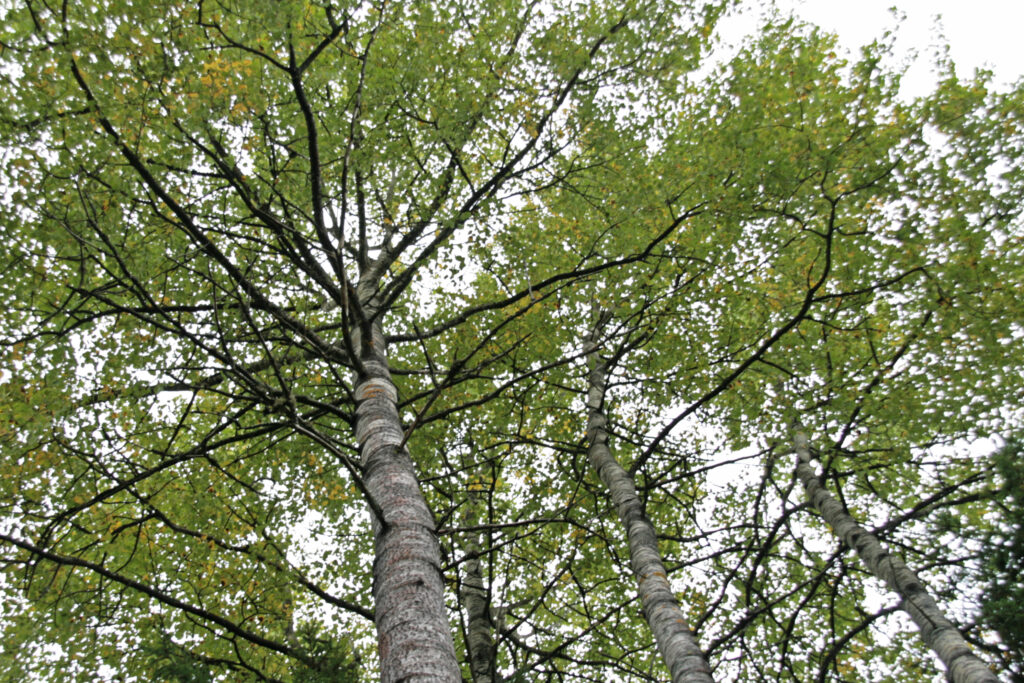Point of view: Finnish forest will stand the course

”By now I have explained several times over the problem with the ecological sustainability of Finnish forests,” said Mr. Jussi Nikula from WWF Finland at an event in April where the Finnish energy company Fortum published its bioenergy policy. ”And I could reply to you but this is not really the place or the time,” answered Mr. Anssi Kainulainen from the Finnish forest owners’ union, the MTK.
That is how I felt myself at the time: taking time over this issue would not have been polite towards the hosts or the audience. So, I will present my reply here.
Nikula argued that Finnish forests are used unsustainably and based his claim solely on the endangeredness of forest species. The argument is understandable, but not sufficient.
Research on endangered species allows sustainability to be described in businesslike and quantifiable terms, which tend to convince people. A frequently-heard Finnish saying is that our information is often exact, but not necessarily correct.
Endangered species are found everywhere
First of all, endangered species are found everywhere. 90 percent of the endangered forest species in Finland can survive in commercial forests – roughly 50 percent of them on decayed wood and close to 40 percent in habitats of special importance that are protected by the Forest Act.
A survey of different habitats shows that problems related to endangered species are concentrated in herb-rich forests and eskers: half of the threatened forest species live in herb-rich forests and roughly ten percent of them on eskers, while these habitats only cover some five percent of the total forest area. On the other hand, the debate on forest protection mostly focuses on heath forests with plenty of decayed wood.
Then again, endangered forest species do not necessarily need to live in forests. In 2003 an old-growth forest species that was considered to have disappeared from Finland for good, the wood wasp Urocerus fantoma, was found on a street in the city of Järvenpää in southern Finland. A year before that the butterfly Borearctia menetriesii, which was also thought to have disappeared completely from Finland, was found on a highway in Lieksa, eastern Finland.
In 1986, a total of 43 forest species were assessed as having completely disappeared from Finland. Most of them have been found again since then. In 1990, only 36 of these species were considered to have disappeared, in 2000 the number was 21 and in 2010 only 17.
Secondly, information of endangered species is not exact, as it is based on estimates which contain many weaknesses.
The occurrence of polypores, for example, is assessed only in August and September, when their visible parts, the fruiting bodies, occur most abundantly. Yet they can also be found in early summer, and not necessarily in the same places.
The fruiting bodies are usually only looked for in places where they have been found before. This method only provides information on their continued occurrence or their disappearance, but any new occurrences will only be found by accident.

If you do not know, you can always guess
In the case of polypores and mushrooms only the fruiting bodies are looked for, although these do not appear each year. Their mycelia are overlooked, although we know that for most of its life a mushroom exists as mycelium only.
In general, the emergence of new habitats is rarely considered in assessments. As a result, measures to protect forest biodiversity, such as the increase of decayed wood and large trees, as well as the continuing ageing of forests, only affect the assessments by a lucky chance.
The assessment of the endangeredness of Finnish birds published in spring 2016 notes that the population of the European crested tit (Lophophanes cristatus) has collapsed, because the area of natural-like forests and especially the amount of decayed wood have decreased, ”and no other reasons can be found.”
The reason given is thus just a guess, and a bad one to boot: in the 2000s, when the population collapse has occurred, ”the area of natural-like forests and especially the amount of decayed wood” have nothing but increased in Finnish forests.
Because of all this, the occurrence of endangered species in an area has always been the least weighty reason for protection in the Metso biodiversity action programme.
Besides, endangered forest species are doing better
If, however, you specifically want to measure biodiversity by the endangeredness of species, the most comprehensive research on the subject has been carried out during the Finnish Red List assessments in 2000 and 2010. According to them, the endangeredness of forest species in particular has not increased between these two research studies (see, for example, Aino Juslén et al, Application of the Red List Index as an indicator of habitat change, Biodiversity Conservation (2016) 25: 569–585).
So if the trend was negative in 2000, as is most commonly claimed, the trend of endangeredness must have taken a positive turn before 2010. This would mean that international commitments to stop the deterioration of biodiversity before 2010 have now been met, at least as regards Finnish forests.
Information on forest biodiversity in forest.fi.
3 kommenttia “Point of view: Finnish forest will stand the course” artikkeliin
kiitos , very informative
I wonder , is there information on about the status of endemic species conservation in the Finland.
Generally, we do protect only endemic species in Finland. As to foreign species, we either tolerate them or try to destroy them. About protection of species you find information on the pages of the Ministry of the Environment.
Kirjoita kommentti